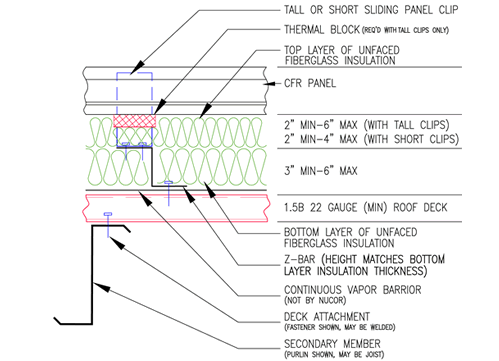I found a few old posts on this subject, but they weren't completely helpful. In my situation, the owner's contractor has requested that we use a standing seam metal roof on a new 53' x 64' on a clearspan bar joist structure with CMU bearing walls. The building is about 20' tall. I know that the metal roofing cannot be used as a diaphragm to brace the building. In addition, the metal roof slopes in the direction of the 53' bar joist length, so a sub-purlin system system is needed perpendicular to the joists at 5' on center max. But then there's the matter of providing a roof diaphragm. Reading the literature will tell you that you either need to provide horizontal x-bracing in the plane of the bar joists, or to use a plywood or metal deck substrate. If you use a substrate, it seems that the sub-purlins would no longer be required.
I feel that the best course of action would be to use a metal deck diaphragm/substrate. It runs perpendicular to the joists and the metal roofing... perfect! However, what happens in the cavity space between the roof and the deck? It seems like you'd have to ventilate the space, both from a thermal and moisture standpoint. Do the standing seam clips simply screw into the deck? Has anyone ever been involved in using such a system? I also know that telling the owner/contractor that they need metal roofing plus metal deck is going to be a hard sell. This is a "cheap" unconditioned building. I need some good advice.
I feel that the best course of action would be to use a metal deck diaphragm/substrate. It runs perpendicular to the joists and the metal roofing... perfect! However, what happens in the cavity space between the roof and the deck? It seems like you'd have to ventilate the space, both from a thermal and moisture standpoint. Do the standing seam clips simply screw into the deck? Has anyone ever been involved in using such a system? I also know that telling the owner/contractor that they need metal roofing plus metal deck is going to be a hard sell. This is a "cheap" unconditioned building. I need some good advice.


